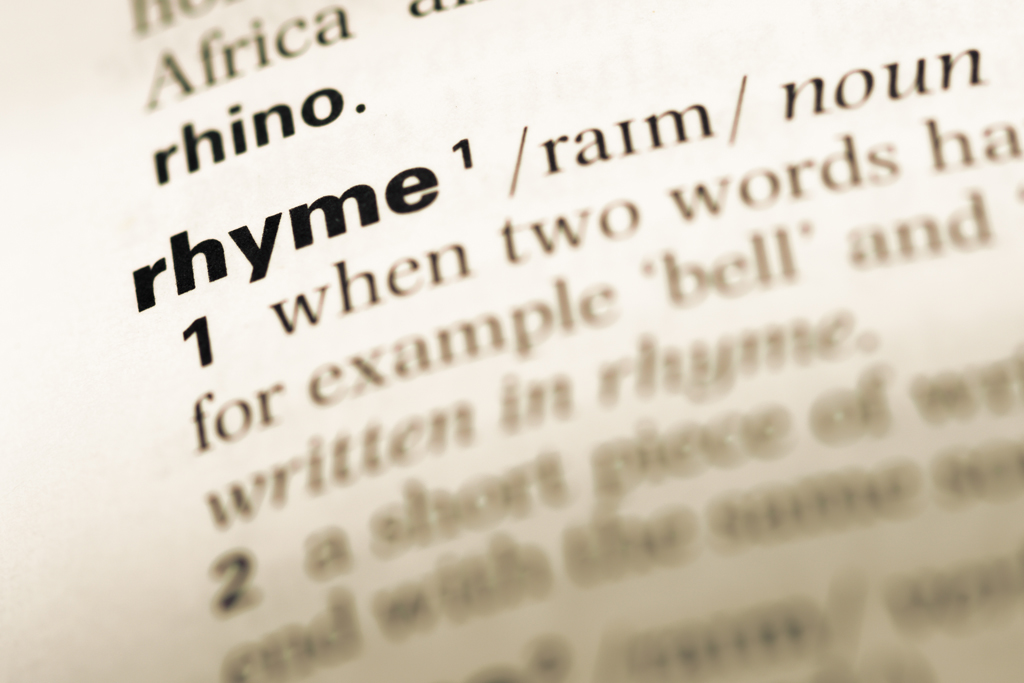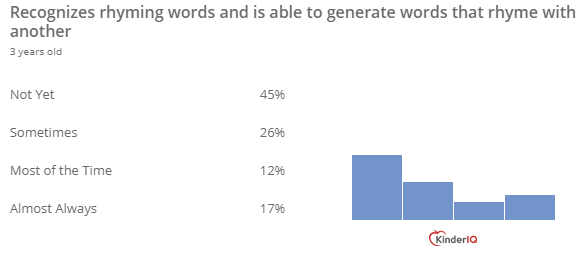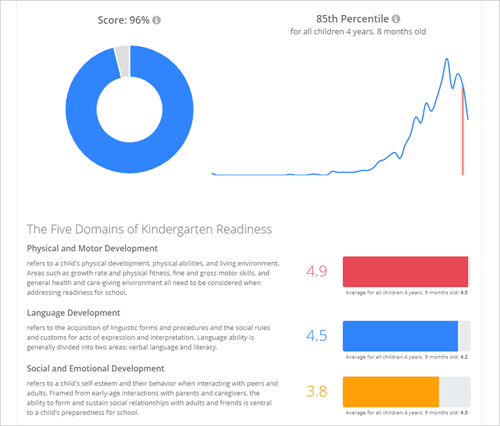Effortless Rhyming Strategies for Ages 3, 4, and 5
tl;dr
- Rhyming helps reading, writing, and spelling
- Children can participate in rhyming games as soon as they can begin speaking
- Nursery rhymes and The Name Game are fun ways for children to experience rhyming
- Try our free Rhyming Flashcards to help build rhyming skills
One of the best predictors in terms of how easy a child will find the process of learning how to read is rhyming. The reason for this is that children who know how to rhyme are generally better able to notice that words that rhyme usually have shared letter sequences. Read this blog post to learn the best practices for teaching children about rhyming words.
Why Is Rhyming Important
Teaching your child how to rhyme is important because this skill is closely linked to success when it comes to reading, writing, and spelling. This is particularly true for children who need speech therapy due to delays with speech. These children are more likely to struggle with learning how to read. Children with speech delays benefit significantly from learning how to rhyme. Even children who don't have speech delays benefit from learning how to rhyme prior to receiving formal instruction on reading, writing, and spelling.

If your child is older and having difficulty reading, writing, spelling, or sounding out words, you should make sure that their rhyming and other phonological awareness skills are strong. Lackluster phonological awareness skills will hinder their ability to learn how to read, write, and other literacy skills.
When Do Most Children Learn How to Rhyme?
Young children develop at different rates. Therefore, not all children learn to rhyme at the same time. However, in general, any child who is able to read is also able to rhyme well. By the age of 3, most children are able to participate in rhyming games but will struggle to generate words that rhyme with another.

By the age of 4, many children are able to recognize when words rhyme. At the age of 5 or 6, most children can come up with sounds that rhyme. Beyond the age of 6, most children are able to produce rhymes with ease.
In order to learn how to rhyme, children need to be able to hear and recognize the sounds and syllables in a word. Teaching your child how to rhyme will help them develop skills that will make it easier for them to learn how to read.
How to Teach a Child How to Rhyme
One of the best ways that you can introduce your child to rhyming is by reading nursery rhymes to them. Some examples of nursery rhymes include Itsy Bitsy Spider, Baa Baa Black Sheep, Mary Had a Little Lamb, and Hey Diddle Diddle. Whether your child is an infant, a toddler, or a preschooler, you can read nursery rhymes to them.
Purchase a set of nursery rhyme books. As you read these rhyming books to your child, take the time to point out the words that rhyme. As your child gets better and better at rhyming, you can ask them to come up with more words that rhyme with some of the words in the rhyming books.
Record yourself reading nursery rhymes. When you're in the car with your child, you can play these recordings. This is a great way to teach your child about rhyming words and entertain them at the same time while you're driving.
You can use your child's name to teach them how to rhyme. For example, if your child's name is "Tracy", you can playfully nickname them "Crazy Tracy".
You can also play name games with your child and a few of their friends. These name games can involve rhymes. For example, you can say, "Do two jumping jacks if your name rhymes with 'Scary'". Another example of a rhyming game that your child can play with friends is the Rhyming Basket. First, place a variety of objects into a basket. Have the children sit in a circle and pass the basket around. Each time the basket is passed, say a word and have the child pull out an object from the basket that rhymes. For example, if you say the word "Hall", the child should pull out a ball from the basket.
There are many resources available on the Internet and in libraries and bookstores that parents can use to teach their child how to rhyme. You can find our free rhyming flashcard worksheets here. There are also workbooks that will help your child learn how to rhyme as well as other essential skills for reading and writing. You may also be able to find free online Flash games that will help your child learn and practice rhyming. On YouTube, you can find videos for your child to watch about rhyming. Be sure to monitor what your child watches if you allow them to watch videos on YouTube about rhyming.
When it comes to teaching your child how to rhyme, it is best to use a variety of methods. Some methods will work better than others, depending on your child's preferred learning style. It is also incredibly important that you are patient and consistent. Your child will learn how to rhyme faster if you have them practice every day. You don't have to spend a significant amount of time each day teaching your child how to rhyme. In many cases, just 10 minutes each day is enough for a child to get the hang of rhyming.
Why Your Child Might Struggle to Learn How to Rhyme
There are different reasons why a child may struggle to learn how to rhyme. One common reason is that the child may not have strong phonological awareness, which is defined as the awareness of the sound structure of words. Phonological awareness, like rhyming, is also a strong predictor of how easy it will be for a child to learn how to read, as stated above.
It also common for kids to be confused about which sounds in a word must match for rhyming. For example, a child may mistakenly believe that the words "chicken" and "church" rhyme because the first sounds of both words match. Therefore, it is important that you make it clear to your child that the sounds at the end of the words must match for rhyming.
Finally, a child may struggle to learn how to rhyme due to inattention and lack of focus. At some point, a child may zone out, especially if they've been asked to do harder tasks like coming up with rhymes.
What Should Your Child Learn Next?
After your child learns how to rhyme, the next phonological skills that they should learn include breaking up words into syllables, syllable blending, segmenting words into individual sounds, and sound blending. The individual sounds are consonant-vowel-consonant (CVC), consonant-vowel, and vowel-consonant (VC). Syllable blending involves putting the syllables together into a word. Sound blending involves putting the sounds together into a word. An example of syllable blending is taking the syllables "blend" and "er" and getting the word "blender".
Want to know if your child is ready for kindergarten and how they're performing relative to their peers? Check out our free online kindergarten readiness test to get immediate real-time feedback across the Five Domains of Kindergarten Readiness and a comprehensive scorecard to visualize performance across each developmental area.

Teaching your child how to rhyme doesn't have to be difficult. Following the best practices and tips discussed above will help you teach your child how to rhyme and get a head start when it comes to skills necessary for literacy success.